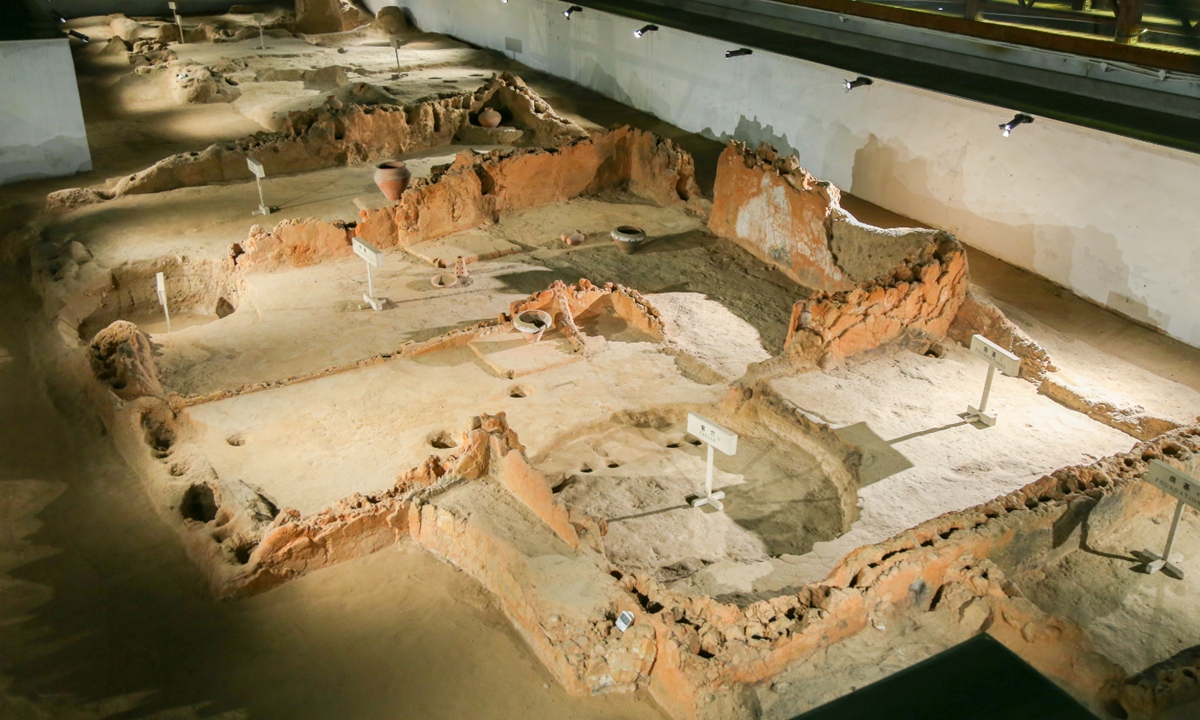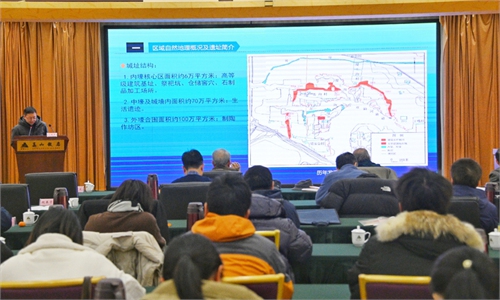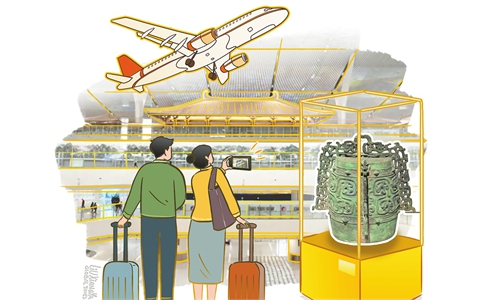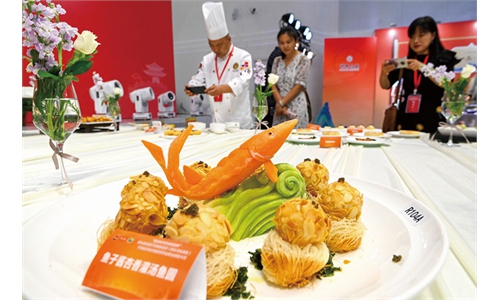ARTS / CULTURE & LEISURE
Dahecun Site Museum set to open, to showcase Yangshao culture’s origins, artistic legacy

Dahecun Site Museum Photo: VCG
After meticulous planning, the Zhengzhou City Dahecun Site Museum in Zhengzhou, Central China's Henan Province, is set to open for trial operations on Saturday, according to a statement on the website of the Culture and Tourism Department of Henan Province. An official at the museum who requested anonymity told the Global Times on Monday that all preparations are proceeding as planned.According to the statement, the new museum, with an exhibition space of 7,292 square meters, houses over 1,600 carefully curated artifacts. The narrative structure of the exhibits begins with a broad perspective on river civilizations around the world, then zooms in on China's own river civilizations before delving deep into the full spectrum of the Yangshao culture and the unique archaeological significance of the Dahecun site itself. The result is a comprehensive panorama of a vibrant civilization that thrived between 7,000 and 5,000 years ago.
Located in the southwestern part of Dahecun village in the northeastern suburbs of Zhengzhou, the Dahecun site is an ancient settlement rich in archaeological layers from the Yangshao and Longshan cultures, along with relics from the Erlitou culture and Shang Dynasty (c.1600BC-1046BC).
As one of the key sites marking the origins of Chinese civilization, it represents a dazzling facet of Yellow River culture and bears witness to the entire evolution of Chinese civilization, from its nascent stages through the formation of the slave dynasties of the Xia (c.2070BC-c.1600BC) and Shang.
Since ancient Chinese translated the night sky's vastness into artistic forms by painting sun motifs, moon patterns, solar halo designs, and comet symbols onto pottery, Dahecun has earned the moniker "the village beneath the starry sky."
Dai Jiancang, the deputy director of the museum, once unveiled that the Dahecun site documents all seven phases of the Yangshao culture's development, offering a complete record of the evolution of painted pottery designs. It has yielded 2,458 painted pottery shards with diverse decorations, including straight lines, dots, stars, and sun and moon motifs.
Among the treasures unearthed at Dahecun is a double-bellied painted pottery vessel measuring 20 centimeters in height. Crafted from red clay and adorned with black slip, its surface is decorated with parallel lines. Scholars believe that such vessels may have been used by clan leaders or elders to share drinks during alliance ceremonies or major celebrations, symbolizing peace, friendship, and unity.
Another masterpiece from the site is a white-painted pottery basin, a rare gem of China's prehistoric ceramic art. Its surface is adorned with intricate designs, including 12 sun motifs encircling the outer ring and 24 interconnected triangles forming a radiant sun-like pattern in the inner ring. These designs are symmetrically and evenly distributed, testifying to the craftsmanship and aesthetic sensibility of the time.
What makes this basin even more remarkable is that it bears ancient repairs, a testament to the ingenuity of the people who made and used it. This early repair method is strikingly similar to the "staple" technique that only emerged thousands of years later.
Among the most intriguing discoveries at the site is a remarkable "three-room, one-hall" house foundation from the Yangshao period that has stood for more than 5,000 years. This structure, built using a "wooden framework with clay walls," covers an area of 50 square meters, making it the best-preserved prehistoric dwelling of its kind discovered in China to date.
"Different from other dwellings from the Yangshao Period that are circular or circular and semi-subterranean, this wooden framework construction not only laid the foundation for traditional northern Chinese dwellings but also marks a milestone in the history of Chinese architecture," Zhao Congcang, a professor at the School of Cultural Heritage at Northwest University, told the Global Times.
"As the Dahecun Site Museum opens its doors to the public, visitors will have the chance to explore these extraordinary relics and gain a deeper understanding of the culture, art, and ingenuity of the people who lived beneath the stars thousands of years ago," Zhao said.



